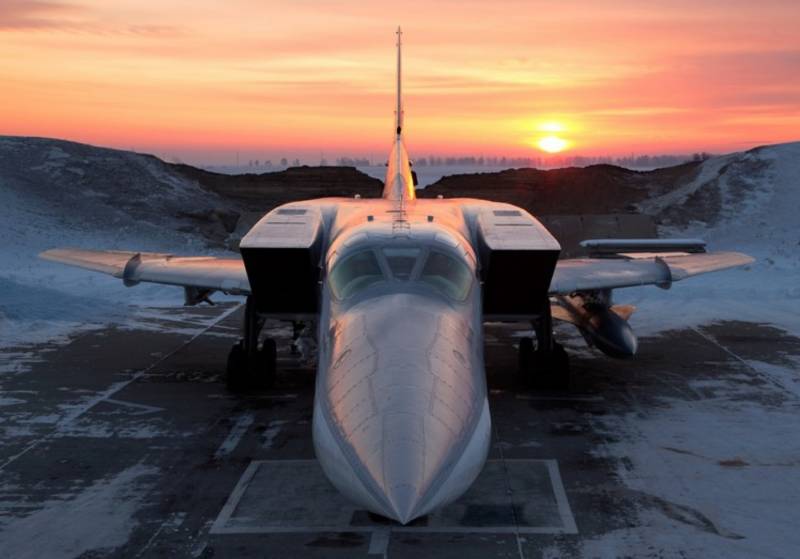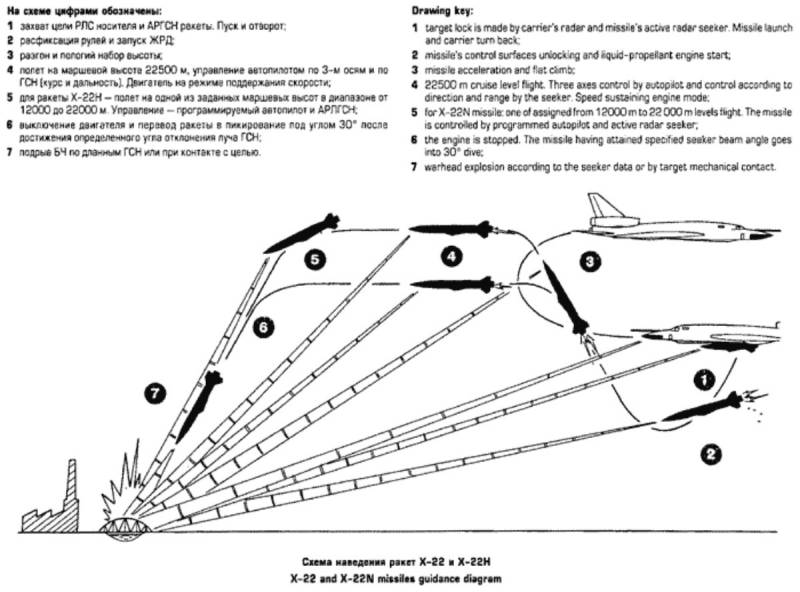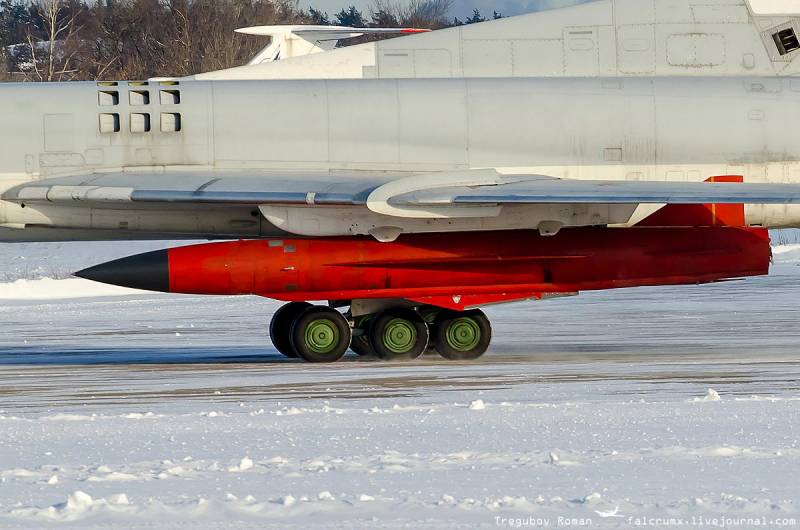Moscow turned into reality the terrible dream of the NORAD command in Alaska! On the "hacking" of the northwestern US missile defense sector
THE MANEUVERS OF THE "BATTLE MARRIAGE" AND "THE WEST" CONFIRMED READINESS FOR ESCALATION CRAFT IN EASTERN EUROPE
The scale of maneuvers successfully conducted by the Russian Armed Forces in the Western and Southern military districts in recent weeks has probably exceeded the expectations of even the most patriotic part of the population of our state. Their apogee can be considered a joint Russian-Belarusian exercise "West-2017", held from September 14 to 20, in which more than 13 thousand military personnel took part. Involvement of impressive armored and artillery “bones” of the Russian and Belorussian forces in maneuvers, comprising more than 250 main combat tanks, 200 units of barrel and rocket artillery, as well as 70 units. tactical and army aviation It caused a huge resonance in the military departments of the Eastern European countries participating in the North Atlantic Alliance, as well as at NATO headquarters, since even such a number of T-90A / C MBTs clearly demonstrates the possibility of a local offensive throw on the western OH. This is what the population of the Baltic states have been afraid of recently. What is the hysteria of the West about the creation by our VKS and Ground Forces of zone A2 / AD around the Suvalki Corridor, which will certainly connect the Kaliningrad Region with the western border of Belarus.
No less important and illustrative maneuvers are the operational-strategic exercises (MTR) “Combat Brotherhood-2017”, launched on October 2 within the framework of the Collective Security Treaty Organization. Here, the main focus was not on the western operational direction, but directly on the Donbas TVD area, because the exercises started in the Rostov region. An expressive detail of these maneuvers is the coincidence of the date of their conduct with the dates of the possible implementation by Kiev of legislative steps to conduct a large-scale offensive operation against the Donetsk and Lugansk People’s Republics. The exercise began immediately before the adoption of the next criminal law “on the reintegration of Donbass”, in which Russia is now considered as an “aggressor”, and the republics of Donbass are to be seized and cleared. A striking example of the forthcoming attempt to conduct an offensive operation can be considered the transfer to the Southern Front of the DPR (Novoazovskoye and Telmanov ON) of the most protected Ukrainian modifications of the T-64 - BM “Bulat”, which were recently noticed at the Zachatievskoy railway station, which is on the border between the occupied VSU and the DPR. and Zaporizhzhya region.
The adoption in the first reading of the law on the so-called “reintegration of Donbass” (No. XXUMX) completely excludes the implementation of the “Minsk agreements” by the Ukrainian side. From the moment of the approval of the updated project in the second reading, the legal instruments of influence (or pressure) on Kiev through the OSCE or the UN will be extremely ineffective, and any artillery shelling of the peaceful cities of the republics and the positions of the LDNR People’s Militia corps can only be calmed down by artillery fire. battery armies of the republics. This situation provides Donetsk, Lugansk and Moscow carte blanche for decisive countermeasures comparable to those taken against Georgia in 7163. Here, both the counteroffensive with the liberation of Mariupol and the exit of the republican armies to the borders of the Crimean border are becoming more than relevant.
The renewed configuration of the Donbass Reintegration Bill, in which the Ukrainian pseudo-deputies from pro-government and nationalist circles plan to raise the issue of establishing Russian sovereignty over Crimea, further increases the degree of tension. It would not be funny and at the same time disgusting to listen to those who come from the street. Mykhailo Hrushevsky marasmus of the Ukrainian parliamentarians, the current situation in the southern border part of the Kherson region leaves much to be desired. Here is concentrated almost a quarter of the available units of the receiver and rocket artillery of the Armed Forces of Ukraine, which is more than 70 - 80 transported howitzers, the same number of ACS in size from 122 to 203 mm ( from “Carnation” to “Pion”), around 100 MBT, at least 2 of the C-300PS divisions and a huge amount of anti-tank weapons (including tandem anti-tank guided missile systems RK-3 “Corsair”, representing a serious threat to most T-72B3 tanks (with a huge vulnerable area around the gun mask). Naturally, the mixed grouping of the Russian Armed Forces in the Republic of Crimea will erase Ukrainian units in a matter of hours, and the C-300PM1 and C-400 air defense systems will destroy about half of the 9М55К missiles. Nevertheless, some of them can still reach large settlements of the peninsula in the first minutes of hostilities and this should be stopped, and this means that the border READ VSU should be destroyed in advance, even at the time of the preparation of possible aggression from Kiev.
There will be "soft-bodied" amateurs who will argue that the above opinion kindles more bellicose rhetoric and is unacceptable in the media against the background of difficult Ukrainian-Russian relations, but it is time to call things by their names: the leadership and military formations "Square" are basic and far from harmless today anti-Russian instruments in the hands of Washington and Brussels, which can be activated at the first click of the fingers of the “big uncles” from the Pentagon. Consequently, the “Combat Brotherhood-2017” exercise can be considered a slightly significant signal for Kiev from Moscow about the inadmissibility of aggressive actions against LDNR and attempts to destabilize the situation on the Crimean part of the Russian-Ukrainian border. More than 12 thousand people of drugs, about 1500 units, participate in the maneuvers. small arms, armored vehicles and artillery, as well as about 100 aircraft, which is enough to demonstrate the strength and network centrism not only to such a degrading command of the Armed Forces of Ukraine, but also to the central headquarters of the combined armed forces of NATO.
"BACKFAIRS" JOIN THE "GREAT GAME"
Behind all this military-political turmoil occurring within the limits of the still conditional European theater of war, not everyone drew attention to an event of strategic importance that occurred in the northern part of the Asia-Pacific region. As part of the flight tactical exercises of long-range aviation of the Russian Aerospace Forces, the link of long-range missile-carrying bombers Tu-22М3 for the first time stories carried out a flight to the airfield Anadyr (“Ugolny”), which is an international co-location airport in the Chukotka Autonomous Region. It would seem that the 3,5-kilometer runway for several decades has been used as a jump airfield for the Tu-95MS strategic missile-carrier bombers (deployed at the Engels-1 airfield in the Saratov region), as well as from 82 to 92- As a leading airbase for the 171 th Tula Red Banner Fighter Aviation Regiment of Air Defense, which has Su-15ТM fighter-interceptors to cover the eastern air approaches to the USSR / Russia. But never before has such a high emphasis been placed on using the Anadyr airfield as an intermediate point of deployment and at the same time an advanced bridgehead for operating the 2-fly-flying long-range missile-carrying bombers Tu-22М3 over the Bering Sea. Now we will look at the operational and strategic details of this, seemingly regular, flight tactical exercises.
First, the use of this airfield for deploying “Backfires” in the northern part of the Pacific Ocean indicates the existence of a similar opportunity for the strategic missile carriers Tu-160 / М2. This will enable the deeply refined “White Swans” to carry out noticeably longer combat duty over the eastern Pacific Ocean and the Arctic Ocean without using IL-78M air tankers. No less serious operational and strategic opportunities Anadyr opens for the crews of Tu-22M3 and Tu-160M / M2 in terms of lightning preemptive massive missile and air strikes on the advanced facilities of the Joint Command of the air-North American Aerospace Defense (NORAD) in case of direct US-Russian conflict.
One of these sites is the largest Alaskan joint military base “Elmendorf-Richardson”, located in the city of Anchorage, just 1660 km from Anadyr. Taking into account the fact that the proposed launch points for T-boats X-555 / 101 will be located directly in the NORAD air defense identification zone (above the eastern part of the Bering Sea), the flight time will be only 1 an hour. Fully reflect the impact of 48 - 64 unobtrusive strategic XR X-NUMX, neither Raptors nor upgraded with new F-101C radars will definitely have time, and damage to the Elmendorf takeoff will ultimately lead to the loss of comprehensive control of the US Air Force over the eastern identification line The US and Canadian air defense zones (NORAD), which passes just 15 km from Anadyr. It is not difficult to understand that with the loss of this most important air bridgehead over the Bering Sea, the capabilities of the US Air Force for “fire control” over the objects of the Pacific Fleet from the north-east IT will be practically zeroed out. The structure of the NORAD airbase "Elmendorf" is crucial. It is the “ears and eyes” of the US Air Force in the north-west HV, as its E-435C / G long-range radar detection and control aircraft are deployed on its territory, enabling it to track the movements of virtually all known low-altitude aerial attacks. But this is still far from the entire list of troubles that the NORAD command will face in the event of the movement of strategic aviation of the Russian airspace to Anadyr airfield.
The most vulnerable points are automatically elements of the missile attack warning system and reinforced concrete mine launchers of the GBMD long-range anti-missile complex, represented by exo-atmospheric GBI interceptor missiles (the object is deployed near Fort Grills, Alaska). But if one can inflict significant damage on antimissiles only through a massive point strike with strategic X-102 cruise missiles with nuclear equipment, then to completely disable the AN / FPS-123V5 early warning system and missile attack warning PAVE PAWS with a sufficiently accurate attack even one or two CKR X-101 with PF or cluster warheads, which will destroy most of the receiving and transmitting radar modules and hardware modules. The antenna post of the AN / FPS-123 radar station located in Clear, Alaska, is represented by the construction of a pyramid shape with a two-way active phased 2560 DF antenna array operating in the low-frequency decimeter-wave band (420 - 450 MHz). The power of each antenna array in 900 kW allows detection of ICBM warheads at a distance of 5000 km.
The AN / FPS-123 station in Clear provides an overview of the northwest air direction; consequently, its decommissioning will almost completely “shut off” the sector of the American anti-aircraft missile system, which is responsible for controlling aerospace over the northern part of the Asia-Pacific region, Siberia and the Arctic region for Washington such a turn of death events is similar. As you can see, the appearance of supersonic bomber carriers in Anadyr was an excellent asymmetric response to the deployment of THAAD anti-missile systems batteries in South Korea, the deployment of strategic reconnaissance UAVs to Japan, as well as the repeated expansion of the American military contingent in the South Korean Pyongkaek.
The anti-ship and anti-radar capabilities of the Tu-22М3, which the latter, if necessary, can use against the naval and carrier-based strike forces of the US Navy, pulling up to the Aleutian Islands and directly to the Bering Strait, should have a no less sobering effect on the Pentagon. The US Navy and the Air Force know perfectly well that in the 21st century the Beckfire missile arsenal is qualitatively different from the one used in the 80's - 90's. Take, for example, the heavy X-22 supersonic anti-ship missile (according to the AS-4 "Kitchen" NATO classification). The first modification of the missile entered service in the 1965 year, and already by the year 1967 was integrated into the control system of the Tu-22 bomber as part of the K-22 “Storm” complex. At that time, the rocket had truly outstanding flight performance: the march flight speed in the stratosphere reached 3710 km / h, the flying speed (at the time of the dive) was about 2200 km / h, the flight height was 25 km and the range of about 500 km (at flight profile). The most powerful high-explosive fragmentation or cumulative combat units weighing a tonne 1 could seamlessly destroy even the target hiding behind reinforced concrete slabs (the armor penetration of the cumulative warhead reached 12 m!). And even if we imagine a possible failure of the electronic fuze cocking device, the enormous kinetic energy of an 5,9-ton cruise missile could inflict critical damage to any existing destroyer / cruiser class surface ship. Also provided for a version with a nuclear warhead power 200 kT, which today can be re-commissioned.
The undeniable advantage of the "Kitchen" at the time of adoption is the ability to escape from most of the existing SM-1 / 2 family of anti-aircraft missiles (RIM-67A, RIM-66D) when trying to intercept it, because the speed of the latter barely reached 2900 - 3600 km / h only during operation of the solid rocket engine. After adopting the RIM-174 ERAM ultra-long-range anti-aircraft guided missile, where the maximum speed of the rocket (due to the modern two-stage design with the Mk 72 solid propellant accelerator and the “long-playing” sustained two-mode turbojet Mk 104) can be retained until the moment it enters into the stratified strata of the stratostras and the grid - 30 km), X-35 has lost its speed advantage, which is why there is an urgent need to develop a faster anti-ship / anti-radar missile.
On the background of the fact that the new PKR / PRLR was required to be put into service as soon as possible, the command of the Russian VKS did not wait for the development, flight tests, and integration of the first pre-production samples of the 3М22 “Zircon” missile on board the Tu-22М3 and relied on continued development of the existing Sonetka project, based on the modernization of the existing X-22 to the level of 9-А-2362, also known as X-32. Development work on this project was started at the end of the 80-years. in the ICD Raduga in the distant 80s, but due to the difficult political and economic situation in the country, the design of the product stretched for almost 20 years, despite the fact that the X-32 design was based on the same X-22 AS-4 Kitchen. "
As a result, the main phase of testing a promising product 9-А-2362 passed only in July 2013. The carrier was the long-range Tu-22М3-1 bomber (board No.9804), upgraded with the corresponding package of on-board radio-electronic equipment for X-32 integration within the OCR "Potential". The first stage of the X-32 state tests was successfully completed at the end of August 2016, after which the products began to enter service. As you know, they replaced the X-22 cruise missile line, which was presented: the X-22Н multipurpose cruise missile designed to destroy surface / ground-based radio contrast targets (equipped with an active RGSN); X-22NP anti-radar, in the task list of which was the defeat of the enemy’s radio equipment (equipped with a passive RGSN), and also X-22HA, equipped with an inertial guidance system with corrections on the terrain.
The list of benefits of the multipurpose X-32 rocket is quite extensive. Firstly, it is on 30% high flight speed, which almost reaches a hypersonic index in 5М (5400 km / h) on the main line. Neither the RIM-174 ERAM, nor the MIM-104C anti-aircraft missile of the Patriot PAC-2 anti-aircraft missile system can destroy this rocket in pursuit. Meanwhile, interception into the forward hemisphere does not constitute great difficulties, since the X-32 glider has an impressive effective scattering surface (ESR) within 0,5 - 0,7 м2. Thus, the AN / MPQ-65 multifunctional radar of the Patriot PAC-3 complex can detect X-32 at a distance of 100 - 120 km. The radar of the AN / SPY-1D (V) type is able to divert it at an even greater distance in 145 - 180 km. There are two ways to compensate for this disadvantage. The first one has already been implemented and presented by 3,5 - 4-flying approach speed, which, with massive use, will “overload” the target channel of “Aegis”, and shipboard BIUSs will not technically cope with the lightning-fast “star strike” of the anti-ship missiles. The second option is to equip the X-32 missiles with an on-board electronic warfare complex, which sets up barrage and distraction interference to counter missiles with active and semi-active radar homing systems, or with a container with IR traps to impede the operation of infrared homing heads.
The increase in airspeed resulted in an almost 2 -fold increase in the maximum trajectory height, which is about 40 - 45 km. On the flight, this practical ceiling provides the inaccessibility of the X-32 for any modification of the Patriot air defense system, and possibly the RIM-174 ERAM anti-aircraft missiles. More importantly, not every surveillance radar DRLO can detect the approach of X-32 to radio-emitting ground objects (when used in anti-radar mode). In particular, the most common radar review and target designation of the US Air Force AN / TPS-75 "Tipsy-75", operating in the S-band (at frequencies from 2 to 4 GHz, and with a wavelength of 7-15 cm), is capable of detect targets at altitudes up to 29500 m, while the ceiling of the modernized kitchen exceeds this figure by 10 - 15 km. It can be detected by: AN / SPY-1D radars of the D / L range AN / TPS-59 (V) 3 ground-level radars, which are in service with the United States Marine Corps, as well as promising three-band 3DELRR radar systems and mobile multifunction radar AN / TPS-80 G / ATOR. The latter are distinguished by a fundamentally new elemental base of active phased antenna arrays, which are built on the basis of thermal and wear-resistant gallium nitride (GaN) PPMs capable of operating with much greater power and, therefore, the total radar range.
The third advantage caused by minimal aerodynamic braking at an altitude of 40 km and a modified liquid two-chamber rocket engine is the X-32 range, which is close to 1000 km! Unlike the X-22 with a maximum range of 480 km, the new missile will allow the crews of the Tu-22М3 to deliver “decapitating” strikes on the carrier-based strike forces of the US Navy approximately 2 times faster than the launch X-32 fighters approach the multi-purpose fighters — closer than the launch-launch fighters — closer F-35B / C and F / A-18E / F Super Hornet. An attempt to intercept the Tu-22М3 would be a complete failure, because to ensure the range of 900 km on the Super Hornet pendants, 2 PTB and 2-4 SAM AIM-120D should be placed, and this will reduce the maximum speed to 1350 - 1450 km / h by afterburner mode. The only interceptor that could counter the X-32 missiles from the 1000 km distance is the F-14A / D with Phoenixes on board, but, fortunately, these machines were decommissioned as early as 2006. In terms of operational and tactical qualities (apart from a slightly lower marching speed, the greater ESR and unconfirmed ability to perform anti-aircraft maneuvers) X-32 approaches advanced hypersonic X-Zumon missiles, which after 3-x can become the basis of weapons as long-range missile carriers Tu -22М2020, and strategic missile-carrying bombers Tu-22М3.
It may seem that the “ancient” cruise missiles X-22 in the new outfit 9-А-2362, which have long been worn out, absolutely do not correspond to the concept of battles in theaters of operations XXI, but, as you see, this is not true. In almost 50 years of existence and modernization, the X-22 radio-electronic image has changed dramatically: the X-32 received a new semiconductor element base of ARGSN, an inertial navigation system, etc. What is even more interesting, precisely today, in the century of active development of heat-resistant and light composite materials (including radio-transparent), the specialists of the GosMKB Raduga JSC. AND I. Bereznyak ”could resume work on the aeroballistic modification of the Kyrgyz Republic - X-22B, which was tested in the 70-s. During a dive at a target, a rocket could boast speed in 6M!
At that time, not a single ground-based or shipborne long-range air defense system of European or American development had the technical ability to intercept such high-speed targets (before the delivery of the Patriot PAC-1 to the US Army). Unfortunately, the design and development work on this product has been minimized due to the lack of the necessary construction materials of the airframe, which could successfully combine high heat resistance capable of preserving the internal components of the rocket, with the required mass properties to maintain high LTH. All this today is quite realizable. This picture is also partially applicable to the comparative analysis of the 3-45 "Granit" heavy anti-ship missiles with the promising Onyx anti-ship missiles 3М55, which were reviewed in our earlier works.
As you can see, the unique operational-tactical and technological features of the long-range shock tandems Tu-22М3 - Х-32 open up unprecedented horizons for Russian videoconferencing. In particular, during the possible use of Anadyr Tu-22М3 from the airfield, they can easily turn into a mountain of scrap metal and dust not only any American naval strike force in the northern part of the Asia-Pacific Region, but also deprive the United States of anti-missile capabilities in the Alaska region and northern Canada. We note that the situation with the transfer of “Backfires” to Anadyr is an excellent countermeasure for the frequent flights of “Rivet Joint” near Kaliningrad and Global Hawk in the Kuban region.
Information sources:
http://militaryrussia.ru/blog/topic-756.html
http://rbase.new-factoria.ru/missile/wobb/x22/x22.shtml
http://rbase.new-factoria.ru/missile/wobb/sm-6/sm-6.shtml
https://tvzvezda.ru/news/forces/content/201710050113-bp06.htm




Information